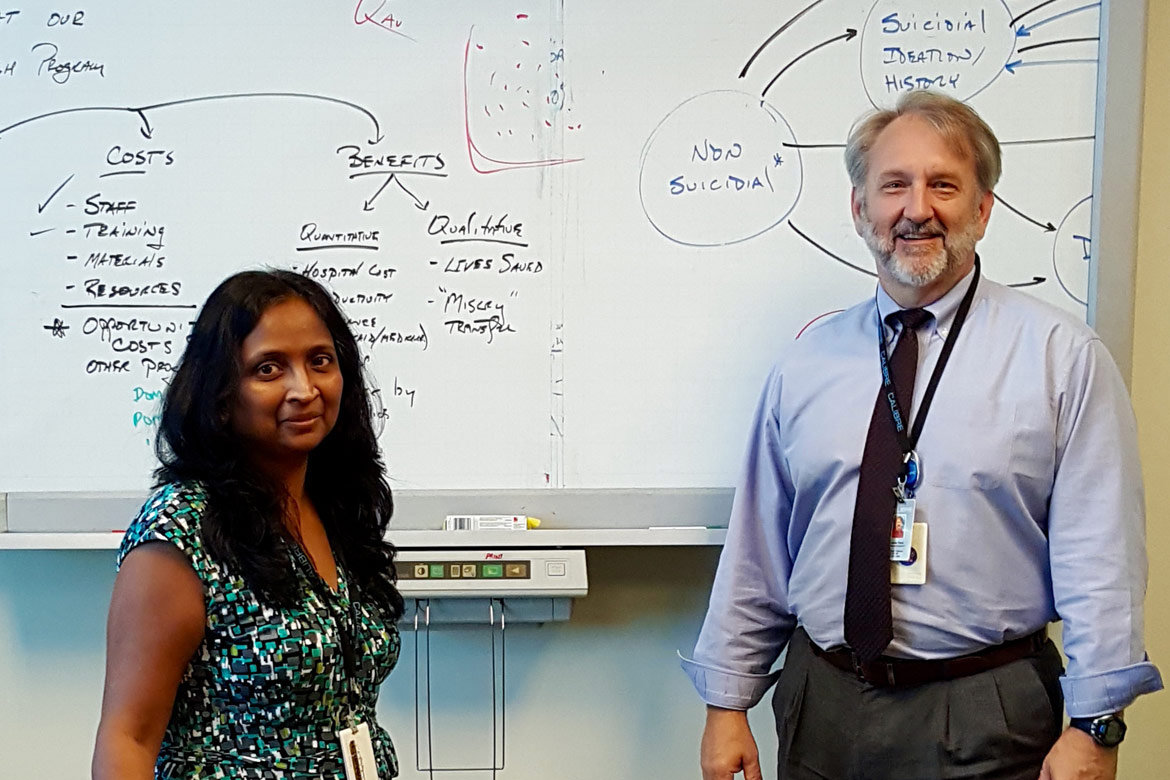Making the connection between economic impact of suicides and benefits of suicide prevention

Dr. Ramya Sundararaman and Jim Frank with Calibre Systems conduct cost-benefit analyses to devise its implications in health care decision making, including prevention of suicide. Dr. Sundararaman is a Lean Six Sigma Black Belt and a PMI-certified public health physician with more than 15 years experience in health policy and management of public health projects. Mr. Frank is a principal analyst at Calibre, and also holds a Lean Six Sigma Black Belt.
Health care decision makers have limited resources, so when presented with competing provider needs, they often use some form of economic evaluation—whether formal or informal—to choose how to best allocate available resources.
Enter Calibre Systems, a respected management consulting firm based in Alexandria, Virginia. Calibre conducts cost benefit analyses, or CBAs, for clients in health care and beyond. CBA gives decision makers a set of options or alternatives (such as training, tools and methodologies) that provide health care systems with the most benefit for the least cost—a critical component in suicide prevention.
“In the field of suicide prevention, there have been discussions on and requests for CBAs,” says Ramya Sundararaman, MD, MPH, PMP. Dr. Sundararaman is deputy director of Health Policy Research & Analytics at Calibre Systems. “Even this year, the Zero Suicide Collaborative had tremendous activity associated with a need for more economic analysis,”
The field is not without challenges when it comes to analyzing the economics of suicide prevention, Dr. Sundararaman notes, not the least of which is calculating the cost of each life saved. This is difficult at best, given the myriad considerations including perspective, assumptions and social sensibility.
“However, through a well-defined scope, agreed-upon terms, and reasonable assumptions, we can estimate the costs and benefits—and hence, perform a CBA,” Dr. Sundararaman adds. “At the very least, two options concerning suicide prevention are ‘no action or change in current processes’ or maintaining the status quo, as opposed to a ‘zero suicide’ approach.
Dr. Sundararaman and Calibre Systems colleagues Chuck Lunati, PMP, vice president and senior economist, along with Jim Frank, MS, principal analyst, are presenting a workshop on CBA and suicide prevention at the 49th Annual Conference of the American Association of Suicidology in Chicago on March 29, 2016. The conference runs March 28-April 2, 2016.

